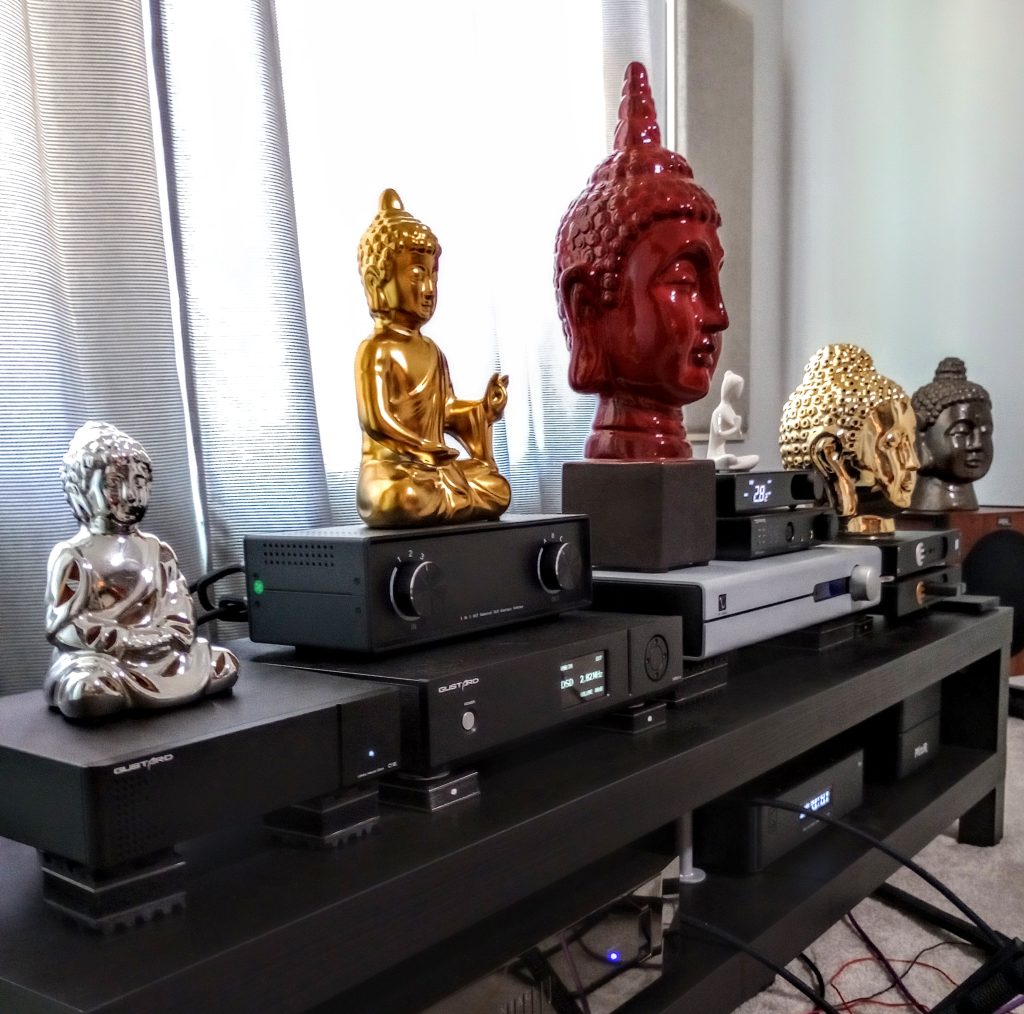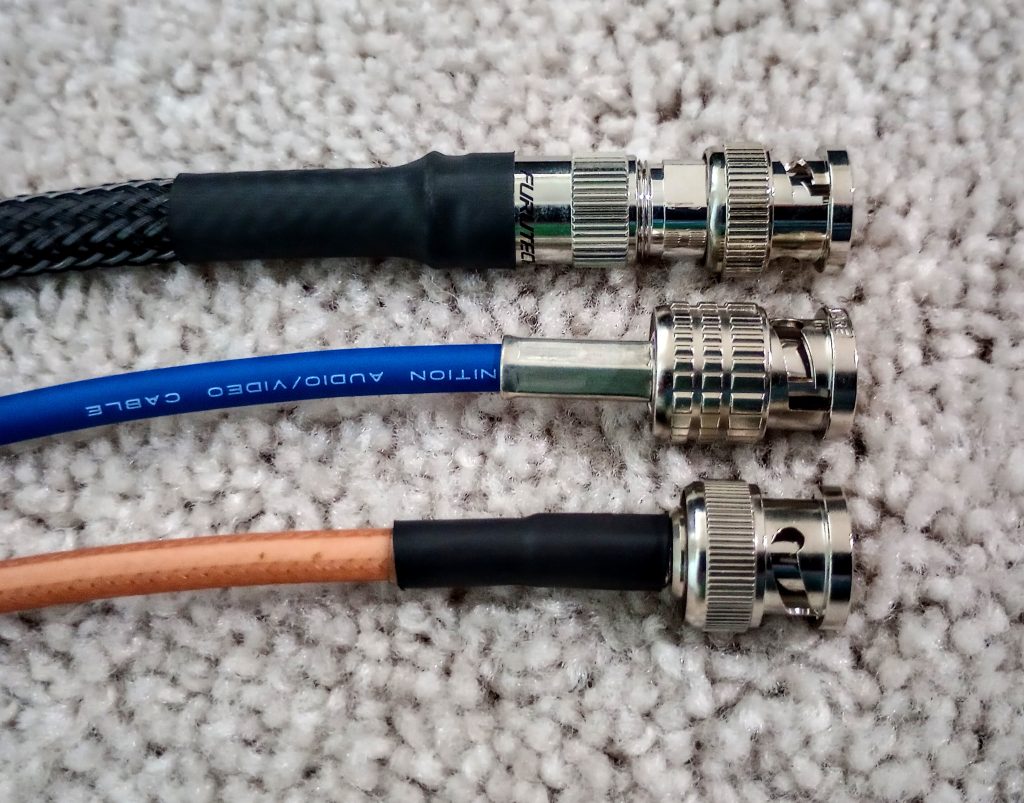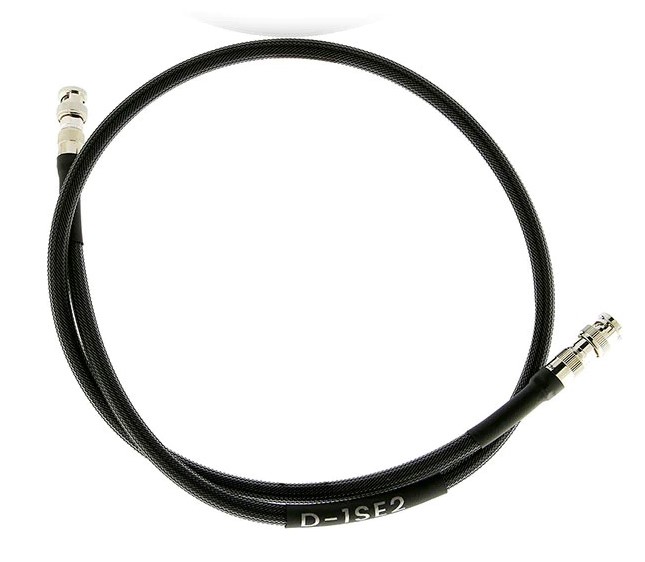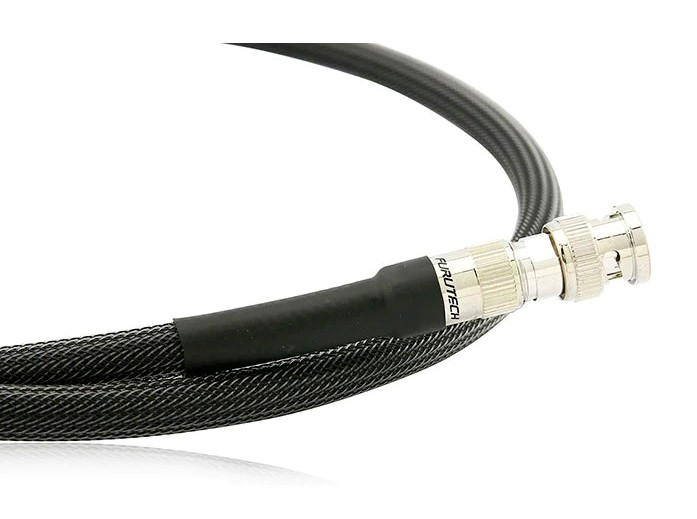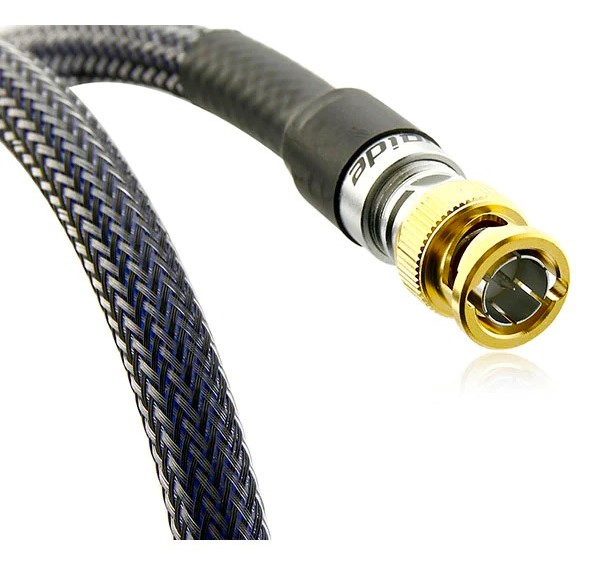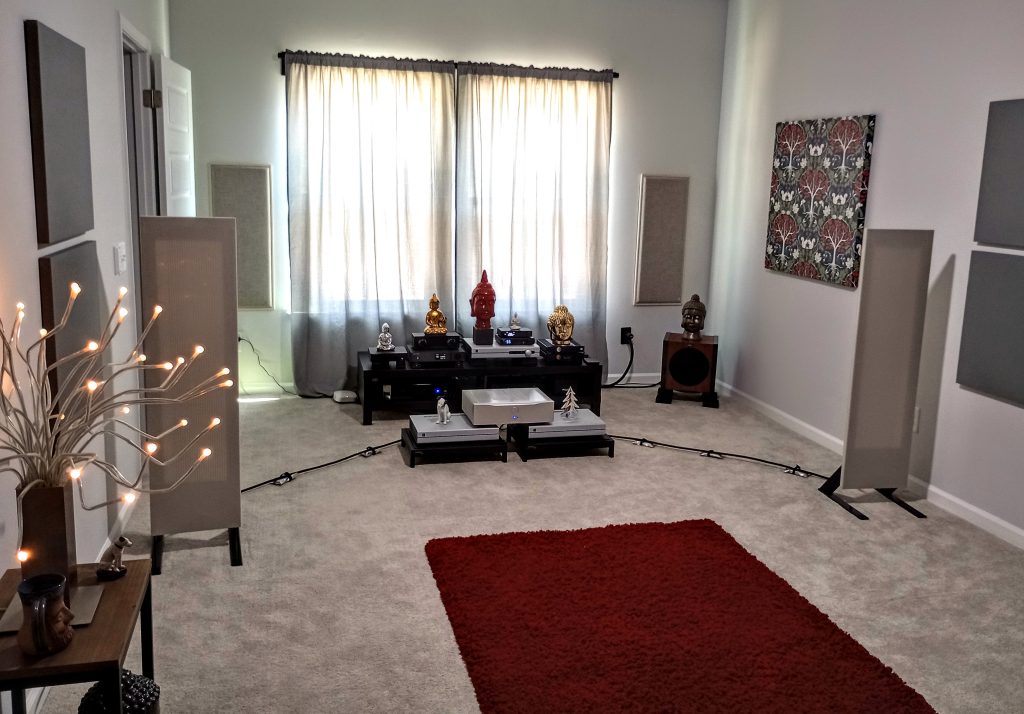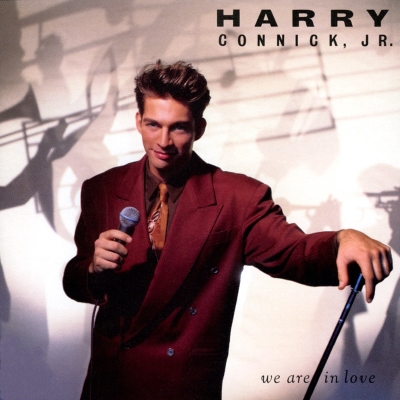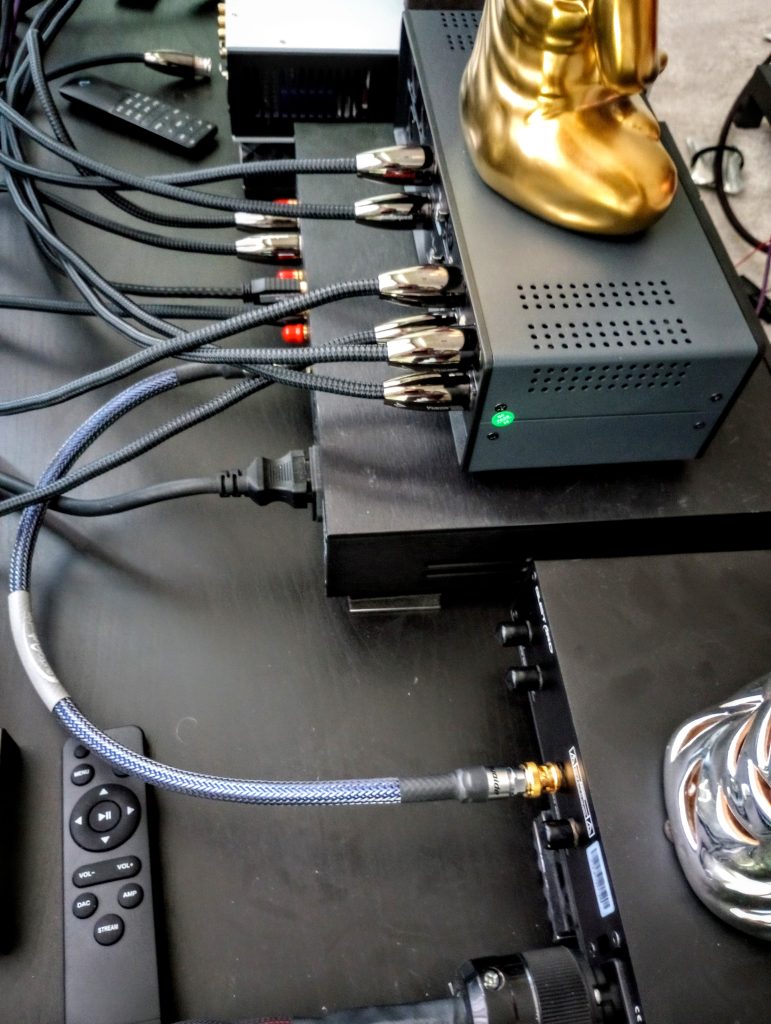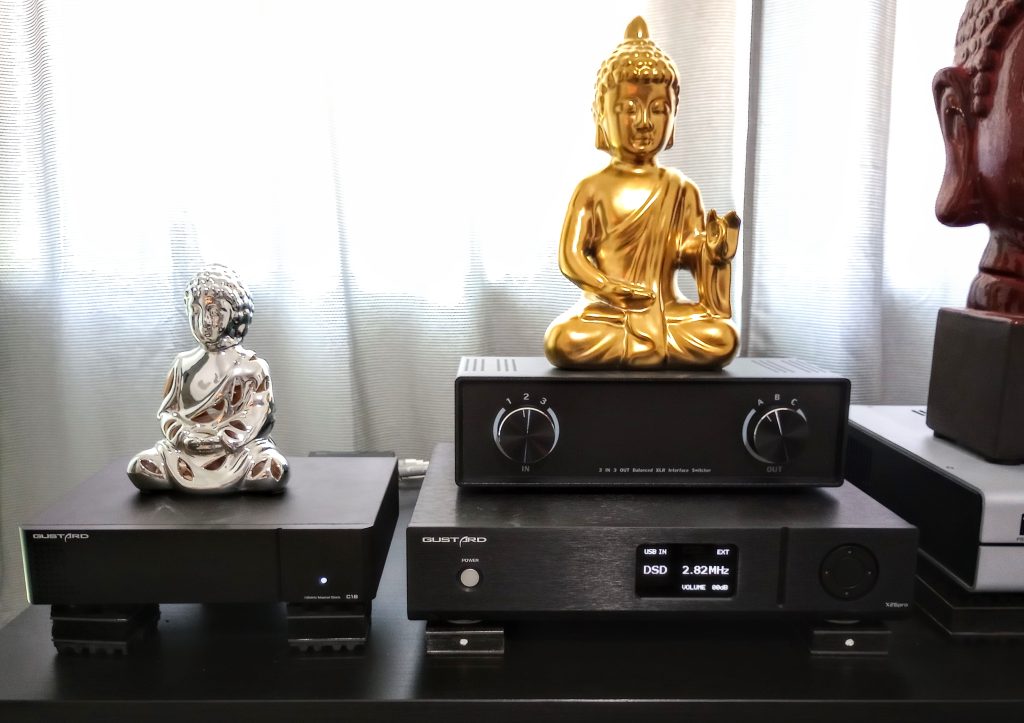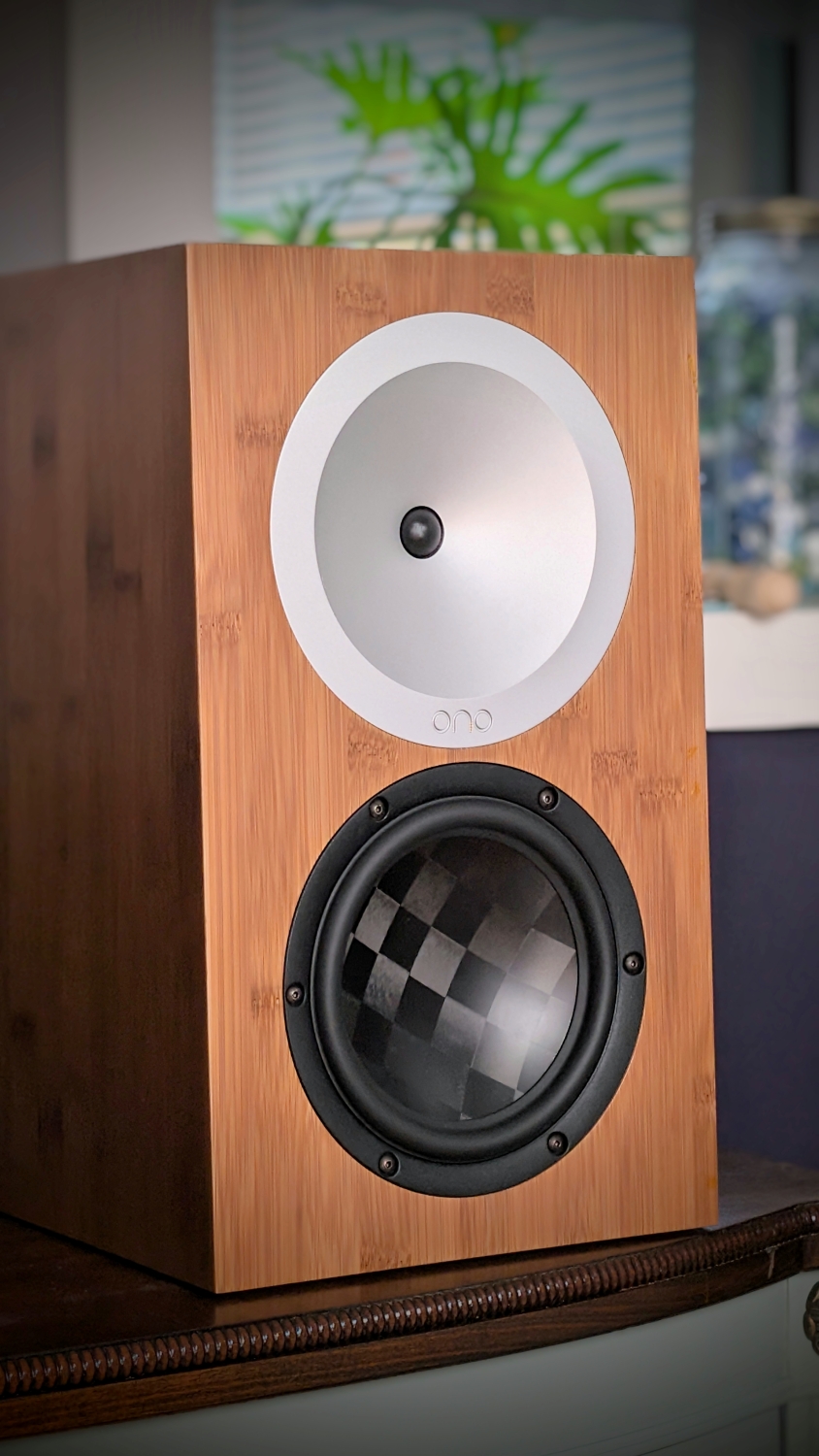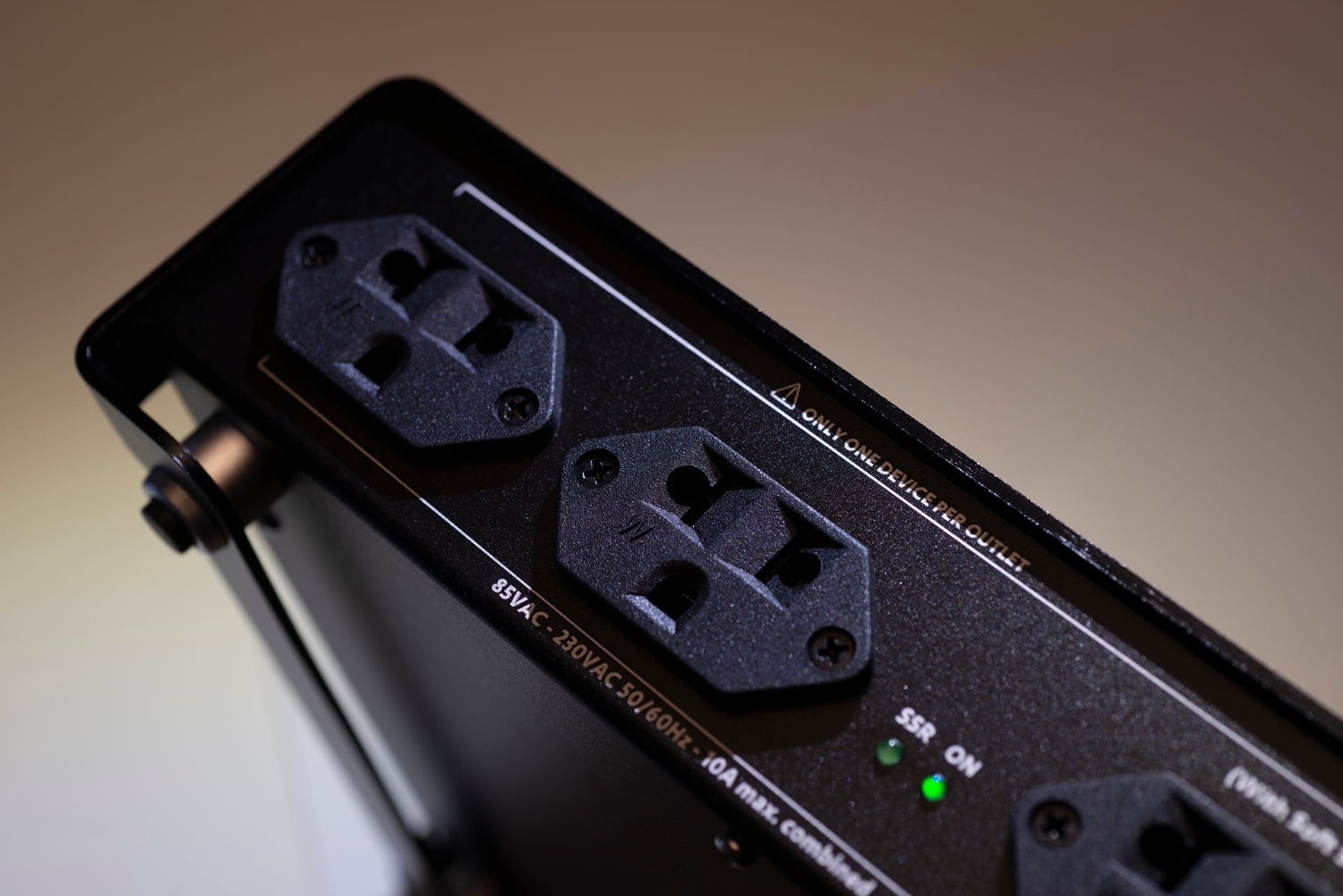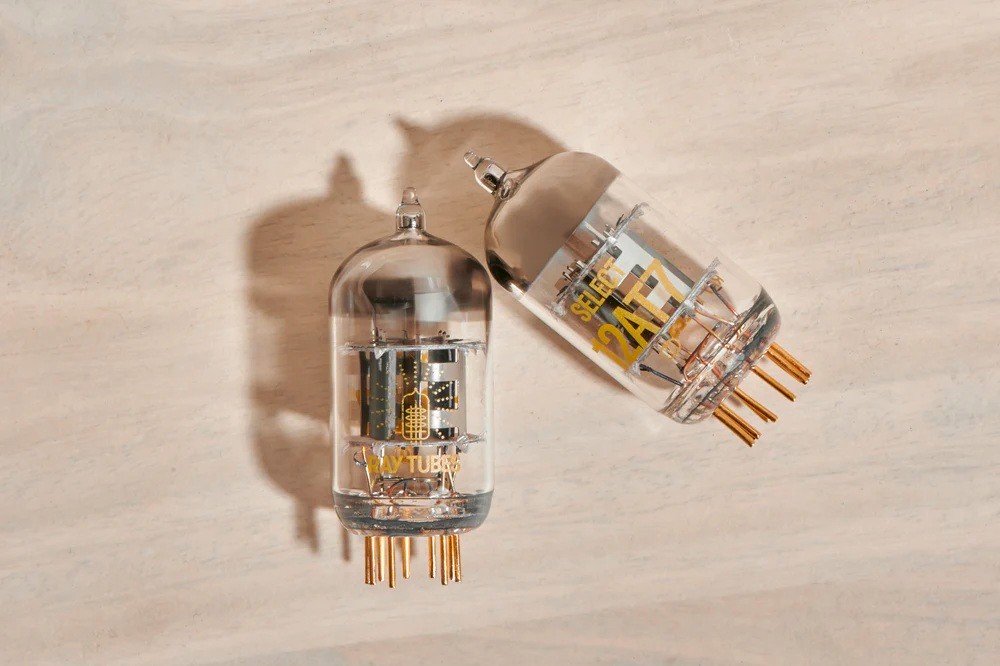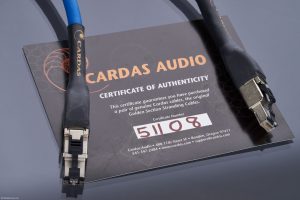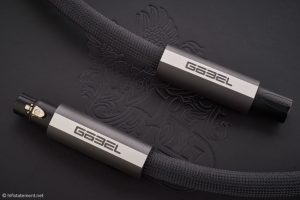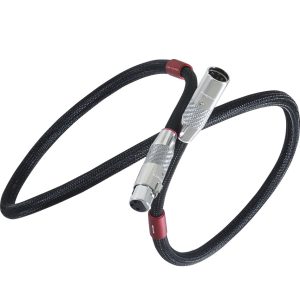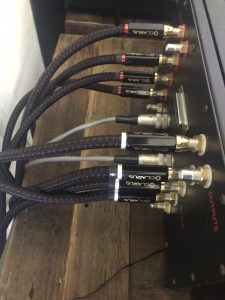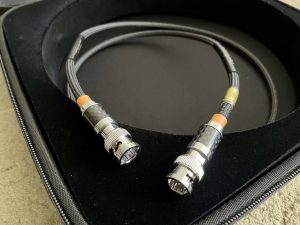I found out I'd be receiving the Gustard X26 Pro DAC and C18 Oven Controlled Constant Temperature Clock (OXCO) units for evaluation in late Spring 2022. But just after receiving the notification email, I realized that I'd need a BNC-type digital cable to connect the C18 Clock to the X26 Pro DAC—and I definitely didn't have anything with BNC connectors available in my fairly extensive collection of cables. I use the term "collection" loosely; at the time, it was actually more like a rat's nest of multiple boxes jammed with audio and computer cables of every type imaginable. After arriving in the new digs, I've rectified that situation, and have gotten a lot more organized. But at that point last year, my cable collection was populated by every possible length of anything with both generic and high-end pretensions—all crammed into multiple storage boxes in an area behind my listening room. Finding anything was an ordeal, and I probably had every cable that had ever been supplied by every manufacturer of every piece of audio or computer equipment that had occupied any system in my home for the last 20 years.
Anyway, in a mad panic, I fired off an email to Gustard, to simply inquire as to whether the C18 clock unit would be supplied with any kind of BNC digital cable at all. I'd noticed on their website—which is an often confusing mix of English- and Chinese-language information—that an upgraded BNC digital cable was available for purchase, but there was nothing there about the C18 unit being supplied with any kind of cable at all. As was typical with most of my communications with Gustard, no response ever arrived; it seems that despite my having a fairly good relationship with the company, they just don't seem to respond to emails in any kind of timely fashion. Ever. So after a week with no response, I started scouring the internet for information on BNC digital cables—which I knew absolutely zilch about.
First off, I want to say that I'm an absolute believer in the use of high-quality cables for audio applications, and I've had a really good relationship with AudioQuest over the years. Most of the loudspeaker, AC power, interconnect (single-ended and balanced), and digital cables that currently occupy my two main systems are made by AudioQuest. That said, at the time, AudioQuest didn't offer a BNC digital cable, and most of my internet hits seemed to be taking me to pro audio sites like Sweetwater and Guitar Center. Apparently, there's a fairly extensive use of BNC digital cables in the pro audio arena, and with prices all over the place, I ended up ordering a Mogami hi-definition BNC digital from Sweetwater for about $50 that seemed as though it would do the trick. I kind of have mixed feelings about cables from Belden, Mogami, and the like, but I've had good results with them in certain applications. That said, I don't always believe they're as completely musical in audio systems as premium cables from AudioQuest and other high-end manufacturers.
The Mogami cable arrived days prior to the Gustard shipment, which was obviously on the slow boat from the Guangdong Province. It appeared to be well-made, if not particularly flashy, and the BNC connectors were made by Canare. Again, here's where I have mixed feelings with regard to cables—especially digital cables. Of course, there's the "numbers" crowd, who unflinchingly believe that digital is all "1s" and "0s", and cables couldn't possibly make any difference whatsoever. I can see the logic, but my own personal experience has proven to me time and again that for audio applications, premium digital cables always offer a dramatic improvement over generic digital cables. And of course, my wife complained loudly about my spending $50 for a cable I didn't even know I needed—we'll see when the Gustard equipment arrives!
The Audio Art D-1SE2 cable (top) is much more robustly built than the cables from Mogami (center) or Harbour Industries (bottom)!
After sitting in customs in Cincinnati for almost ten days, the Gustard equipment finally appeared, and amazingly enough, a very generic looking BNC cable was tucked in the box with the C18 clock unit. The cable jacket read "Harbour Industries," and its appearance was significantly lackluster compared to the upgraded $250 cable Gustard featured on their website (that cable is apparently no longer available for purchase). Convinced by its appearance that the supplied Gustard BNC cable was probably complete crap, I attached the Mogami cable, put on some generic jazz, and let it play for a day or so to help run-in the new cable and equipment. Cold, out-of-the-box, everything sounded pretty sterile and musically lifeless.
A couple of days later, I had a better opportunity to do some critical listening. While the sound I was hearing was an uptick from the more budget-friendly Gustard X16 DAC that had become the mainstay for digital sound in my system for about a year, there wasn't the "ooh-aah," spine tingling musicality I was expecting from the X26 Pro DAC and C18 clock combination. Just out of curiosity, I subbed in the generic Harbour Industries BNC cable supplied by Gustard, and to my great surprise, it sounded much better than the Mogami cable. And it hadn't even been run-in at all—perhaps after a couple of days, it might sound even better. That proved not to be the case; after a few days, the sound was basically unchanged. The sound quality wasn't bad, it just wasn't as phenomenal as I was expecting it to be. Intrigued by all this, I started investigating tracking down a more premium BNC digital cable.
That was more difficult than I planned; I read a lot of online reviews, which were somewhat helpful, but then getting a manufacturer to respond was another issue altogether. Either the response was extremely muted, or it was "Yippee-Ki-Yay Cowboy!!"—that definitely turned me off. After about a week or so, I stumbled across a piece on the Audio Bacon website that referenced a BNC cable that had apparently at one point been built in cooperation with DH Labs—I'd reviewed DH Labs cables in the past, and had always been impressed with them. The manufacturer was Audio Art Cable; I fired off an email, explained my situation, and a couple of days later, Rob Fritz of Audio Art responded wholeheartedly and enthusiastically to my request to check out the Gustard setup with a BNC digital cable of a higher provenance.
Audio Art Cable to the Rescue!
Within a few days, the Audio Art D-1SE2 BNC digital cable (MSRP $300) had shown up at my doorstep, and on looks alone, I was greatly impressed! Here was a handmade cable that was not only jewel-like in appearance, but also appeared to be built like a tank. The D-1SE2 cable is crafted from Audio Art's proprietary cable technology, and employs a solid Oxygen Free Copper silver-plated center conductor. The D-1SE2 cable is terminated with Furutech FP-3-117(R) BNC connectors that feature a cast copper alloy center pin, and are soldered with Cardas Quad Eutectic silver solder. The conductors, insulation, closed cell foam FEP dielectric, and dual-layer braided, aluminum mylar shielding are encased in a braided Techflex jacket. That made the cable's beefy diameter easily 4-or-5-times that of either cable I had on hand—those cables both looked like cheap junk in comparison! Of course, the proof came after connection and listening; cold and out of the packaging, the aural changes to my system made apparent by the D-1SE2 cable were simply remarkable. The music immediately took on a greater sense of clarity and musicality; retrieval of detail was significantly improved, and there was less blurring of fine musical passages. This was everything I was hoping to hear with the new X26 Pro DAC and C18 clock combo, and the Audio Art D-1SE2 cable was proving to be the perfect conduit for the kind of performance I'd been expecting!
In late June 2022, I dropped an email to Rob to let him know how very impressed I was with the D-1SE2 cable, and that I'd keep him posted with the progress of the review. He responded almost immediately that he'd love to send his Statement BNC digital cable (MSRP $560) for me to compare and contrast, provided I'd be interested. Buoyed by my experience thus far with the D-1SE2, I accepted his most generous offer—with a significant qualification. A life-changing situation had been brewing in my background for a couple of months; my daughter and her husband were putting their house on the market and were moving to Charleston, South Carolina with our two young grandchildren. I'd been spending literally every available moment of every off-day helping them get their house ready to go to market; this had been going on for a couple of months, and suddenly, the house had sold. Now it was time to get them packed and moved, then set up in their new home in Charleston.
A week following the move, my wife had a minor meltdown, and announced that she couldn't live six hours from the grandkids and only see them sporadically throughout the year. I was still employed by publishing giant RR Donnelley, and had planned to retire in March, 2023; that was quickly pushed up, and in what seemed like a whirlwind of craziness, I retired early in August 2022, our home went on the market and we were also moving to Charleston. I then dedicated every waking moment to getting our house ready for sale; our real estate agent dictated that the first order of business was to pack all the audio gear and move it into storage in advance of our impending home sale and move. The house sold in September, but our new-construction home in Charleston wouldn't be ready until later that December. We literally lived out of boxes until then, and I didn't get the audio system fully set up and running to my liking until around March 2023. The whole ordeal proved to be completely exhausting, and quite a few audio commitments were either put on hold or fell through the cracks over the nine months or so that passed.
The Audio Art Statement BNC cable did indeed arrive, but it quickly became apparent that any chance of a timely and thorough evaluation in comparison with the D-1SE2 cable wouldn't happen until some time in the hopefully near future. I sent Rob Fritz an email explaining my predicament, and his response was every bit as understanding and generous as I'd found him to be in all of our previous correspondence and calls, and I thanked him profusely for his patience. Fast forward to now, and we're finally making all this happen; the Audio Art Statement BNC cable has replaced the D-1SE2 cable in my digital system.
The Audio Art Statement BNC digital cable is ridiculously overbuilt!
The Audio Art Statement BNC digital cable is also hand-crafted from Audio Art's proprietary cable technology, but utilizes a Single-Crystal (OCC) solid silver center conductor. The Statement cable is terminated with Oyaide's SLSC BNC silver/rhodium plated connectors, which feature a solid-silver pin connector that's also soldered using Cardas Quad Eutectic silver solder. The conductors, insulation, closed cell foam FEP dielectric, and dual-copper mylar, braided, silver-plated OFC shielding are also encased in a braided Techflex jacket. The Statement cable is ever-so-slightly more robust than the D-1SE2 cable. Neither cable features any directional markings on the jacket because they're bi-directional; the digital signal between the DAC and clock flows simultaneously back-and-forth between each unit. Audio Art cables are hand-assembled to order in their custom shop by Audio Art's own Phil Martinez.
Use and Listening Tests
Click on my name in the header above, and you'll see full listings for all the equipment currently in use in my two systems. For this review, the Digital system (of course!) was used, and it features the network-connected Euphony Audio dual-box Summus/Endpoint streamer/audio player/library organizer. Dual USB signals are then fed to twin DACs in the system, the Gustard X26 Pro that's also connected to the Gustard C18 oven controlled clock unit, as well as a Topping E70 Velvet DAC. Since the gist of this review is for a pair of high-end BNC digital cables, 99 percent of my listening was done using the Gustard equipment, although some meaningful comparisons were occasionally made with the Topping E70 Velvet DAC (unfortunately, the E70 Velvet doesn't have the capability for connection to an external clock). Balanced connections run from the analog outputs of the two DACs to a Nobsound passive XLR switch box, which then feeds a balanced connection to a Topping A90 Discrete preamplifier. The A90 Discrete (review upcoming on Positive Feedback) provides a balanced connection to the Naiu Labs Ella stereo amplifier, which feeds a pair of Magneplanar LRS+ loudspeakers and a REL T1 subwoofer.
My system components have changed versus when the Audio Art BNC cables first appeared, so I felt it was best to basically start from scratch with the entire evaluation. A track from an album I've been listening to a lot recently is the song "A Nightingale Sang in Berkeley Square" from the SACD of Harry Connick Jr.'s 1990 album, We Are In Love. I ripped the DSD tracks from the SACD, and have been streaming them from the Euphony music server. This is one of those albums that's so very well recorded, across my Magneplanar LRS+ loudspeakers, the recorded performance simply floats suspended in the soundstage; there's no indication that the music is coming from either loudspeaker. The album is mostly a big-band affair, but this tune pares the proceedings down to a totally convincing illusion of Harry Connick Jr.'s voice, Benjamin Jonah Wolfe's upright bass, and Branford Marsalis' tenor saxophone. A nicely done intro from Wolfe's bass opens to the left of the soundfield, Marsalis' sax then enters from the right, and Connick's silken voice punctuates the soundfield front and center. Over a really good digital system, this native DSD track presents an illusion of reality that nearly defies belief—you can just close your eyes, and the performers are right there in front of you. It's a really good track to hear and evaluate differences between DACs and other components—and especially cables.
I began with the two original cables, the generic one supplied by Gustard, and the Mogami cable I got from Sweetwater. Which surprisingly, neither sounded nearly as bad as in my original assessment, although the same dynamic I had noted earlier was still in place. The Gustard/Harbour Industries cable still sounded better than the Mogami, though neither sounded as bad as I'd remembered. I'll credit some of the change to the fact that the Gustard equipment is now completely burned in. The Gustard equipment as played through both cables sounded pretty good—but not great. Harry Connick Jr. and his supporting players were all there, but they sounded less dimensional, less refined, and much less engaging with both of the budget cables.
The magic was instantly restored the moment I inserted the Audio Art D-1ES2 cable between the Gustard DAC and clock. Harry Connick's voice immediately took on a greater sense of clarity and liquidity, and there was an abundance of depth and detail in the plucked strings of Wolfe's bass that had been slightly blurred by the cheaper cables. Midway through the performance, Branford Marsalis offers a stunningly poetic tenor sax solo that was rendered with such palpability, it literally bursts from the soundstage! With the other cables, the stereo image lacked clarity, and wasn't nearly as wide or deep as with the Audio Art D-1ES2 cable. The sound of this astonishingly good acoustic performance as played through Audio Art's entry level digital cable was quite nearly as good as I've ever heard it.
The Audio Art Statement BNC digital cable was the missing link to experiencing world-class performance from the Gustard equipment.
That is, until I replaced the D-1ES2 cable with the overbuilt Audio Art Statement BNC cable, which features a solid silver center conductor. I've had a significant level of experience with solid silver cables, as well as cables that employ silver connectors, and when done right, I honestly believe silver is excellent for transmission of digital and music signals. There are those who damn silver cables as sounding too "etched" or "harsh," but I think that criticism is application-specific, and in a well-designed cable implementation, silver is a superior medium. When inserted between the X26 Pro DAC and the C18 clock, the Statement BNC cable helped the Gustard units produce a shockingly faithful illusion of this very well recorded music, to the point of blurring the lines between illusion and reality. Take the goodness displayed by the D-1ES2 cable, shift it into hyperdrive, and you get an idea of how very good the Statement cable is. If perfection exists in a digital cable that allows two pieces of high-end equipment to achieve the ultimate in sound reproduction, the Audio Art Statement BNC digital cable has definitely attained it.
Conclusion
I've heard quite a few high-end digital systems at audio shows and in homes that featured external clocks, with many of them sporting five-figure price tags (often even higher!). I listen to both digital and analog audio sources with regularity, and I enjoy listening to well-done digital sources with the same level of enthusiasm as listening to a really great LP. I was hoping that when the Gustard X26 Pro DAC and C18 Oven Controlled Constant Temperature clock unit settled in, they'd offer a generous taste of the impressive sound I desired at a price point that was more within the reach of many audiophiles. I was beginning to believe that might be a fantasy, but the addition of the Audio Art D-1SE2 and Statement BNC digital cables has transformed that fantasy into my new reality!
While I generally try to distance myself from broad, sweeping statements about the superiority of one cable versus another, this evaluation has proved to me that significant differences can easily be heard—even with digital cables. And while $300 for the D-1SE2 or $560 for the Statement BNC digital cables might seem exorbitant, if those cables allow the attached equipment to perform at something approaching their peak—that makes their respective price points seem well within reason, if not an absolute steal! Thanks so very much to Rob Fritz for indulging me and for his patience, but mostly for the brilliance of his cable designs! Both Audio Art BNC digital cables come very highly recommended!
D-1SE2 BNC
Retail: $300
Statement BNC
Retail: $560
Audio Art Cable
All images supplied by Audio Art Cable and the author




